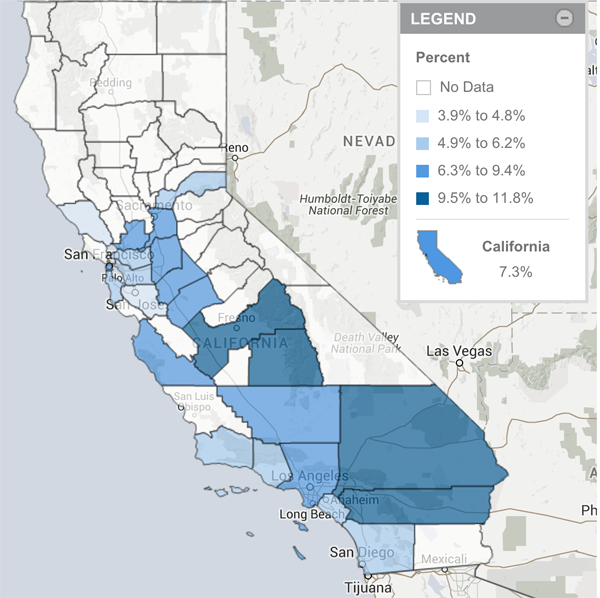Focus on the Figures is a regular partnership between The Imprint and KidsData.org, a nonprofit dedicated to providing data on the health and well-being of California’s children.
Sometimes referred to as “disconnected youth,” older teens who are neither in school nor working are more likely than other youth to struggle with mental illness or substance abuse, encounter violence and become teen parents. Further, disconnected male youth are more likely to engage in illegal behavior, and female youth are more likely to become dependent on public aid.
Education and workforce detachment can have long-term negative effects on employability and earning potential. The effects also can extend beyond the individual; one study estimates that in 2011, youth disconnection cost U.S. taxpayers $93 billion in lost tax revenues and increased social service costs.
According to 2014 estimates, 7.3 percent of youth ages 16 to 19 in California were neither in school nor working. If that sounds low, consider the total number: 178,915 older teens in the state are neither in school nor gainfully employed.
The percentage of youth in California who were disconnected has remained relatively steady between 2007 and 2014 (per single-year estimates).
Family poverty and parental unemployment are among the key factors that place teens at higher risk for becoming disengaged from education and work. Nationwide, American Indian, African American/Black, and Latino youth are more likely than their white or Asian peers to be disconnected from school and employment.
Recent research has traced a connection between disconnection and segregation in major urban areas. Areas with deeply segregated school systems produce far higher rates of disconnected minority youth than do school systems that have been desegregated.
Other particularly vulnerable youth include those in the juvenile justice, foster care and special education systems.

Definition: Estimated percentage of teens ages 16-19 who are not enrolled in school (full- or part-time) and not working (full- or part-time). Teens who are not working include those who are looking for work and those who are not in the labor force.
Data Source: U.S. Census Bureau, American Community Survey (Sept. 2015).
Footnote: Data are displayed for geographies with at least 65,000 people based on 2014 population estimates. These estimates are based on a survey of the population and are subject to both sampling and nonsampling error. LNE (Low Number Event) refers to estimates that have been suppressed because the margin of error was greater than 5 percentage points. The estimates here differ from the estimates of “idle” youth on the American Community Survey website because the Census Bureau’s estimate does not include youth who are looking for work.





